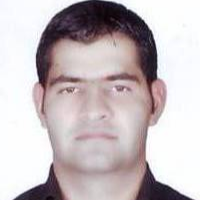International Journal of Intelligent Systems and Applications (IJISA)
IJISA Vol. 6, No. 1, 8 Dec. 2013
Cover page and Table of Contents: PDF (size: 479KB)
A Novel Genetic-based Optimization for Transmission Constrained Generation Expansion Planning
Full Text (PDF, 479KB), PP.73-83
Views: 0 Downloads: 0
Author(s)
Index Terms
Generation Expansion Planning, Genetic Algorithm, Probabilistic Production Simulation, Power Losses Cost, Transmission Constraints
Abstract
Transmission constrained generation expansion planning (TC-GEP) problem involves decisions on site, capacity, type of fuel, and etc. of new generation units, which should be installed over a planning horizon to meet the expectations of energy demand. This may lead to adding or lightening transmission lines congestion. This paper presents an application of genetic algorithm (GA) to TC-GEP problem for simultaneously determination of new generation site, capacity and fuel type for a multi-period generation expansion plan. The objective function in this paper is to minimize the total generation cost which is composed of generation capital investment costs, operation and maintenance (O&M) costs, outage cost, transmission losses costs and transmission enhancement costs. In this paper, also a new method is proposed for computing transmission enhancement costs. In addition a new approach is presented in this paper to determine site and number of combined cycle power plants regarding to candidate units. The GA is applied to solve TC-GEP problem for 4 bus test system from Grainger & Stevenson for a planning horizon of one year and the results are compared and validated against Enumeration Method (EM). Then GA is applied to solve TC-GEP problem for IEEE-RTS 24-bus test system for a planning horizon of three years and results are discussed.
Cite This Paper
Iman Goroohi Sardou, Mohammad Taghi Ameli, Mohammad Sadegh Sepasian, Mohammad Ahmadian, "A Novel Genetic-based Optimization for Transmission Constrained Generation Expansion Planning", International Journal of Intelligent Systems and Applications(IJISA), vol.6, no.1, pp.73-83, 2014. DOI:10.5815/ijisa.2014.01.09
Reference
[1]Hossein Seifi, Mohammad Sadegh Sepasian, “Electric Power System Planning, Issues, Algorithms and Solutions”, Springer-Verlag Berlin Heidelberg, ISSN 1612-1287, 2011,.
[2]Jose L. Ceciliano Meza, Mehmet Bayram Yildirim, and Abu S. M. Masud,“A Multiobjective Evolutionary Programming Algorithm and Its Applications to Power Generation Expansion Planning” IEEE Trans. Syst., Man, Cybern. A, Syst. ,Humans, VOL.39, NO.5, SEPTEMBER 2009;
[3]Jose L. Ceciliano Meza, Mehmet Bayram Yildirim, and Abu S. M. Masud, “A Model for the Multiperiod Multiobjective Power Generation Expansion Problem”, IEEE Trans. Power. Syst., VOL.22, NO.2, MAY 2007;
[4]“Introduction to the WASP IV Model, User’s Manual”, International Atomic Energy Agency, Vienna, Austria, Nov. 2001.
[5]S. Kannan, S. Baskar, James D. McCalley and P. Murugan, “Application of NSGA-II Algorithm to Generation Expansion Planning ” , IEEE Trans. Power. Syst., VOL. 24, NO. 1, FEBRUARY 2009;
[6]S. Kannan, S. Mary Raja Slochanal, and Narayana Prasad Padhy, “Application and Comparison of Metaheuristic Techniques to Generation Expansion Planning Problem”, IEEE Trans. Power. Syst., VOL. 20, NO. 1, FEBRUARY 2005
[7]Mohammad Sadegh Sepasian, Hossein Seifi, Asghar Akbari Foroud, and A. R. Hatami, “A Multiyear Security Constrained Hybrid Generation-Transmission Expansion Planning Algorithm Including Fuel Supply Costs”, IEEE Trans. Power. Syst., VOL. 24, NO. 3, AUGUST 2009
[8]Heloisa Teixeira Firmo and Luiz Fernando Loureiro Legey,“Generation Expansion Planning: An Iterative Genetic Algorithm Approach” IEEE Trans. Power. Syst., VOL.17, NO.3, AUGUST 2002;
[9]Jong-Bae Park, Young-Moon Park, Jong-Ryul Won, and Kwang Y.Lee, “An Improved Genetic Algorithm for Generation Expansion Planning”, IEEE Trans. Power. Syst., VOL.15, NO.3, AUGUST 2000;
[10]Pinar Kaymaz, Jorge Valenzuela and Chan S. Park,“Transmission Congestion and Competition on Power Generation Expansion”, IEEE Trans. Power. Syst., VOL. 22, NO. 1, FEBRUARY 2007
[11]B.Alizadeh S. Jadid, “Reliability Constrained Coordination of Generation and Transmission Expansion Planningin Power Systems using Mixed Integer Programming”, IET Gener. Transm. Distrib.,Vol.5, Iss.9, JAN 2011, pp.948–960;
[12]Wang, X., Mc Donald, J. R.‘Modern power system planning’ (Mc Graw-Hill, 1994);
[13]P.Murugan, S.Kannan, and S.Baskar “Application of NSGA-II Algorithm to Single-Objective Transmission Constrained Generation Expansion Planning”, IEEE Trans. Power. Syst., VOL.24, NO.4, NOVEMBER 2009
[14]Jizhong Zhu, “Optimization of Power System Operation”, John Wiley & Sons, Inc., Hoboken, New Jersey, 2009;
[15]I. Goroohi Sardou, M. Banejad, R. Hooshmand, A. Dastfan, “Modified shuffled frog leaping algorithm for optimal switch placement indistribution automation system using a multi-objective fuzzy approach”, IET Gener. Transm. Distrib. ,Vol.6, Iss.6, 2012, pp.493–502;
[16]John Grainger, Jr., William Stevenson, McGraw-Hill, “Power System Analysis”, pp. 337-338, 1994
[17]“IEEE reliability test system”, IEEE Trans. Power App. Syst., VOL.98, NO.6, November/December. 1979, pp. 2047-2054.
[18]“IEEE reliability test system-96”, IEEE Trans. Power. Syst., Vol. 14, NO. 3, August. 1999,pp. 1010-1020.



